What is ECTS?
ECTS stands for European Credit Transfer and Accumulation System. ECTS is a method of measuring your degree programme as academic currency. Understanding ECTS makes it easier to understand the workload connected to the degree programmes.
The use of ECTS credits is compulsory in higher education in Europe. All Danish higher degree programmes are described according to ECTS as a system for both credit transfer and academic credit accumulation towards the final degree.
The credit system is based on the student workload required to achieve the objectives of a course. The ECTS system requires that every assignment state the estimated number of student work hours needed to fulfil this requirement.
ECTS is used all over Europe
ECTS is used all over Europe and enables you to easily compare degree programmes and transfer your academic qualifications from one educational institution to another. Its aim is to make degree programmes and the performance of students of higher education more transparent and comparable European-wide and to replace or complement the different local (national) standards within Europe.
Is ECTS the same as GPA?
The ECTS is not a grading system. GPA means ‘grade point average’ and refers to a specific grading scale.
ECTS are credits you receive for passing classes. For example, a bachelor's degree might require you to get a total of 180 ECTS credits. In this case, your grades do not matter as long as you pass the classes and obtain the 180 ECTS credits.
How do I calculate and convert ECTS credits?
According to the Danish Ministry of Education and Science, one year of full-time studies corresponds to 60 ECTS credits and one semester of full-time studies corresponds to 30 ECTS credits.
- A 3-year full bachelor’s degree programme has 6 semesters and equals 180 ECTS credits.
- A 2-year master’s degree programme has 4 semesters and equals 120 ECTS credits.
Study activities and ECTS
At the University of Copenhagen 1 ECTS equals 27,5 student learning hours. This includes hours spent at the university as well as outside the university. The number of credits awarded for each course varies depending on the workload.
The learning activities can be:
- class sessions
- reading
- paper assignments
- presentations
- supervised learning activities
- internships
- mentoring
See the european credit transfer and accumulation system's explanation
How to convert your credits into ECTS
You are responsible for providing information about the credit system at your university and to convert your home university’s credits into ECTS credits.
If your 3-year bachelor’s degree consists of 300 credits, convert your credits into ECTS this way:
- 300 (credits)/3 (number of years of your bachelor’s programme) = 100 credits (equals 1 year of studies)
- 100 (credits)/60 (1 year of full-time studies in ECTS) = 1.67 credits
- 1.67 of your credits equals 1 ECTS
It is your own responsibility to check up on the credit scores at your university and to convert them into ECTS.
